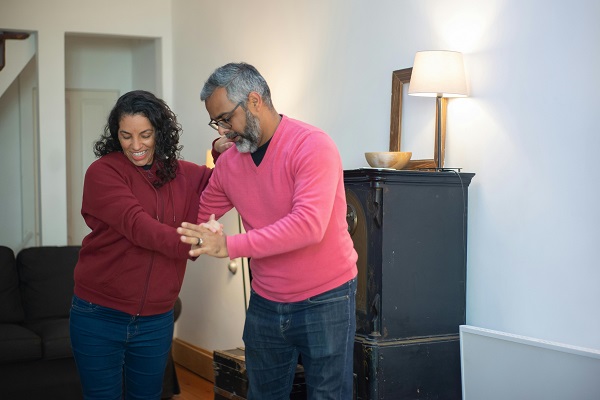“Caring is pivotal to keeping the human enterprise going, yet its function is invisible in the organization of our daily lives”, Sheila Neysmith
This is my 50th blog and I have never yet discussed male caregivers! In my book, I discussed with the women living with fibromyalgia the issues regarding the people who supported them (or in many cases, those who did not provide support or understand what it meant to be living with fibromyalgia). Their answers often surprised me. I am one of the fortunate ones who has a husband with a caregiving nature.
He is my biggest supporter and without him, I don’t know how I would survive the pain and fatigue. I generally feel guilty about the limitations of my life and how they have impacted him. I have long wanted to write about the caregiving strain of coping with people who have invisible diseases while the work of the carer is itself often invisible.
It can’t be easy since those of us with fibromyalgia usually look healthy, and even the caregiver must wonder at times if we really are suffering as much as we say we are. The irony of all this is that women with fibromyalgia are usually in this state of hyperarousal of the nervous system because they themselves were once super-carers of others! Furthermore, the guilt we experience because others are taking care of many of our needs is a conundrum we are forced to live with.
Click Here to Visit the Store and find Much More….
Before I retired from my life as a university professor I supervised several graduate students who wrote their thesis about the caregiving strain on women, caring for elderly parents. I knew all the symptoms: exhaustion, lack of support, resentment, guilt, limited time for oneself, and so on, but it was generally about women in the sandwich generation, caring for elderly parents while still having children they were responsible for on a regular basis.
Since it has been widely researched, about this issue of women as caregivers, I now find myself in a reverse position of living with a husband who is the primary caregiver in our home. I can watch my spouse firsthand and see much of the publicly invisible work he does as a carer. I am constantly wondering what he must be feeling when he hears another complaint from me about having a bad day, my frequent bouts of hopelessness, my groans of pain, and my sleepless nights.
The guilt I feel when I can’t go hiking with him, paddle a canoe, or have travel insecurities and worries is the guilt I can’t control as it is based upon loss of control. I know how fortunate I am to have such wonderful support and my heart goes out to those of you without that help and going it alone on this challenging journey. I often wonder what he is thinking as he rarely complains about my constant malaise! Many caregivers suffer in silence and worry privately about the fate of their loved ones.
Recently I discovered a site in the UK for males who are taking care of their wives/partners with fibromyalgia. One such person is Maurice. His website is of particular interest to me. I have asked him if he would be so kind as to allow me to interview him regarding his own role in the home since his wife has fibromyalgia, and as well to speak of the issues that are of most concern for him and other men in his support group. He has kindly agreed to do this and his wife Mary has agreed to allow him to share his feelings with us. Thank you, Maurice and Mary.
Maurice: What specifically inspired you and Mary to begin a support group for spouses of women with fibromyalgia? Please respond in the comment section of this blog.

Click Here to Visit the Store and find Much More….
For More Information Related to Fibromyalgia Visit below sites:
References:
Fibromyalgia Contact Us Directly
Click here to Contact us Directly on Inbox
Official Fibromyalgia Blogs
Click here to Get the latest Chronic illness Updates
Fibromyalgia Stores





